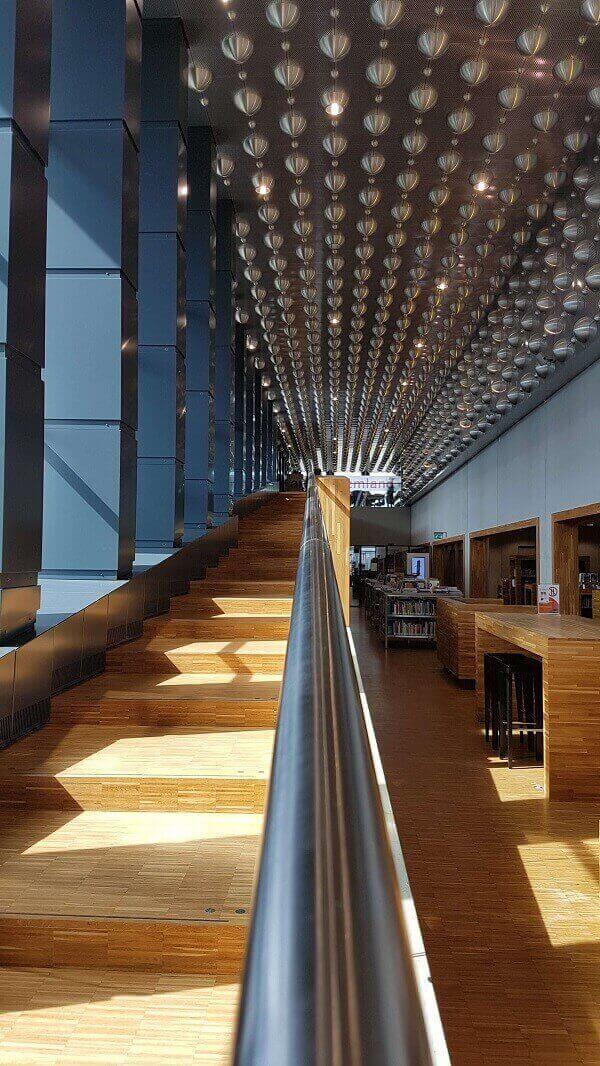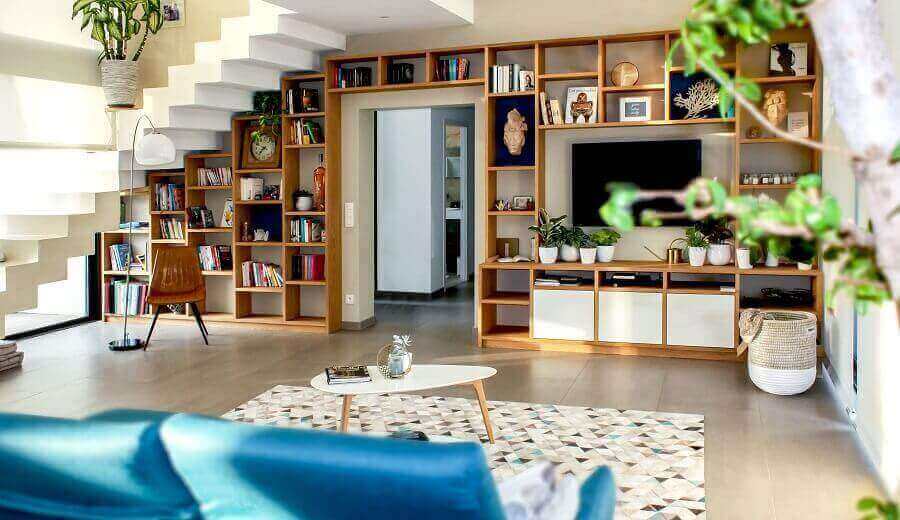Post-pandemic, the need for global changes to the supply chain and environment have been pushed to the forefront of consumers’ minds. If you’re looking to jump on the eco-friendly bandwagon, these sustainable building materials could be the change you need to get an edge over the competition.
From a marketing standpoint, interest in sustainability isn’t going anywhere. In fact, Forbes recently wrote that “68% of highly empowered consumers plan to step up their efforts to identify brands that reduce environmental impact, 61% seek out energy-efficient labels when making purchases and 47% regularly buy organic products.”
With the data to back up your decision, sustainable building materials are highly marketable. Many of them also save property owners money in the long run. So, without further ado, let’s explore some of your earth-loving construction material alternatives.
Flooring
Who doesn’t love hardwoods? The answer is trees, and people who love trees. That doesn’t mean high net-worth individuals are giving them up, though. Here are a few flooring alternatives that have all the shine and none of the waste.
Bamboo
Bamboo flooring has really taken off in popularity over the past decade. Bamboo is a grass and it grows like a weed. Reaching maturity in about a quarter of the amount of time as traditional hardwoods, bamboo is far more cost-effective.

Check out strand woven bamboo in particular. It’s more than twice as hard as oak, making it a practical option for commercial properties.
Cork
No longer a mere remnant of 70s interior design, cork is making a comeback in a big way. Made from the bark of cork oak trees, cork is ground and compressed into easy-to-install sheets. At the end of its lifecycle (and its a long lifecycle), cork flooring is biodegradable. What’s more? It’s a fantastic insulator that will contribute to lower energy costs over the course of its life.
Reclaimed hardwood
As we mentioned above, hardwoods are always appealing (unless you’re looking at the price tag, of course). If you’re into building speculative construction, you might feel like you need the luxurious look to attract buyers. If you want to encourage sustainability but still add the class that hardwoods bring, consider sourcing reclaimed hardwood.
Reclaimed hardwood reduces the demand for new lumber, slowing the process of devasting deforestation. It’s easy to source domestically, reducing the harmful emissions produced during transportation.
Don’t forget to mention to your clients that it’s up to 40 points harder than virgin hardwood. This saves them money in the long run.
Insulation
Insulation isn’t something you want to skimp on. Poor insulation raises utility bills and forces property owners to replace it more frequently. Fortunately, going eco-friendly isn’t wasteful in any sense of the word.
ThermaCork
With an R-value of 4 per inch, ThermaCork is gaining popularity as a building insulator. Its thermal resistance doesn’t degrade over time like man-made foam and its ability to insulate sound makes it fantastic for office buildings and apartment complexes, especially if you’re trying to build a net-zero energy building.
ThermaCork is renewable, recyclable, and biodegradable to boot.
Cellulose
If you’re building in cold climates, it’s time to check out cellulose. A greener material than fiberglass, cellulose is made primarily from recycled paper like newspaper. On top of that, it uses less energy to manufacture and doesn’t result in as much pollution as traditional fiberglass.
Cellulose is great for cold environments as it retains its R-value when the temperature drops before 20 degrees. Conversely, fiberglass loses about 50% of its R-value at those bitter temperatures.
Roofing and Facades
These days, it seems like everyone and their mother is looking to make use of an energy-efficient roof. For some, that means installing expensive solar panels. But there are better ways to protect your head while reducing your impact on the environment.
Cool roofs
If you’re a builder in sunny California or anywhere that receives a lot of sun and heat, you may have already heard of cool roofs. A mixture of white glue and gravel, cool roofs do the heavy lifting so your HVAC system doesn’t have to. Better yet, these durable roofs last longer than traditional roofing materials. The upfront cost may be higher, but the long-term benefits are worth it.
Recycled steel and copper
Recycled metal roofs and siding both preserve natural resources and entice architects and real estate investors interested in going green.
Metal roofs and facades offer a unique look and can be recycled again and again. They’re also energy-efficient and easy to maintain. What’s not to love?
Insulated Concrete Forms (ICFs)
Believe it or not, ICFs generally cut energy bills in half. 10 times stronger than traditional framed structures, ICFs have been known to survive wildfires, hurricanes, and other extreme events. On top of that, ICF buildings are the same cost as traditional buildings, if not cheaper, and easy to use. There’s really no reason not to switch to ICFs!
Concrete Substitutes
Concrete is generally regarded as bad for the environment. Why? Because it emits pollutants during manufacture and produces runoff that enters water supplies and does lasting damage to topsoil and water. Here are a few concrete alternatives.
Hempcrete
It’s no secret that hemp grows rapidly. A byproduct of hemp fiber producers, it’s a renewable resource. Hempcrete is a composite of hemp and lime. It’s an affordable insulation, non-toxic, and amazingly durable.
Papercrete
Another way to make use of paper waste is papercrete. Made from re-pulped paper fiber mixed with clay or soil, papercrete contains only 20% concrete. It’s lightweight and easy to work with in a variety of climates. If you can’t eliminate concrete entirely, papercrete will at least help you cut down.
Can You Afford Not to Go Green?
Finally, we’ve reached a point in history where being economical and environmentally friendly aren’t at odds. Sustainability is not just a fad; it’s becoming a necessity. With so many consumers on board, choosing sustainable building materials will certainly increase your ROI for years to come.
